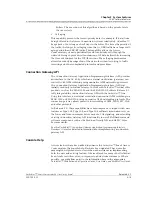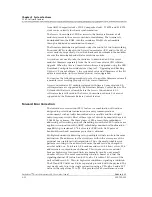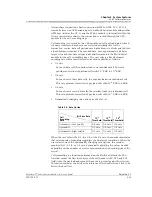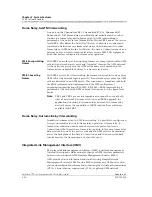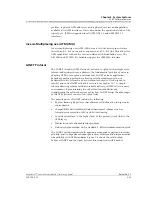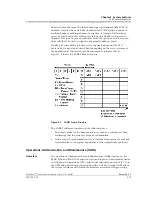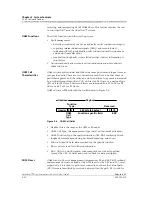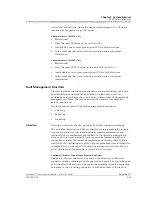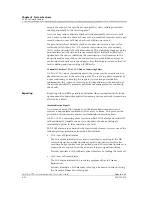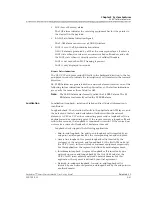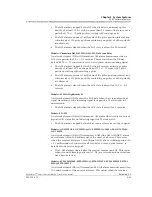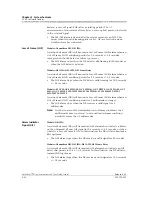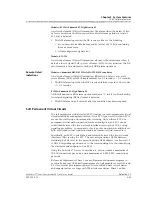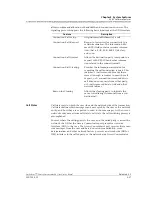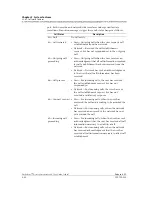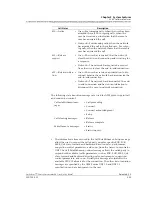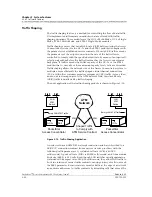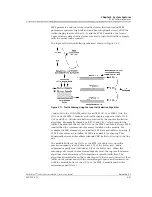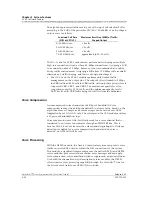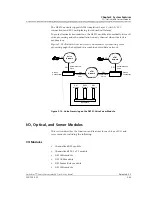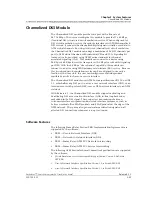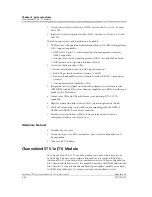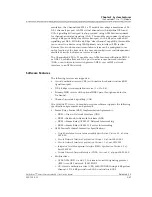
255-700-025
3-33
PacketStar
™
Access Concentrator 60 User Guide
, Issue 1
Release 6.3.0
Chapter 3 System Features
AC 60 Software Features
•
The AIS alarm is stopped by the NE when it detects an average pulse
density of at least 12.5% with no more than 15 consecutive zeros over a
perioid of 175 +/-
75 pulse positions, starting with receiving a pulse.
•
The AIS alarm continues if, at the end of the pulse position interval, any
subintervals of 100 pulse positions containing no pulses of either polarity
are observed.
•
The AIS alarm is cleared when the LOS state is absent for 20 seconds.
Modules: Channelized DS3, DS3 IMA, DS3 ATM, DS3 Frame Relay
A network element (NE) will transmit an AIS alarm downstream when a
LOS state persists for 2.5 +/- 0.5 seconds. This occurs when the NE has
detected 175 +/- 75 consecutive zeros, or no pulses on an incoming signal.
•
The AIS alarm is stopped by the NE when it receives an average pulse
density of at least 33% over a period of 175 +/- 75 consecutive pulse
positions, starting with receiving a pulse.
•
The AIS alarm continues if, at the end of the pulse-position interval, any
subintervals of 100 pulse positions containing no pulses of either polarity
are observed.
•
The AIS alarm is cleared when the LOS state is absent for 10.0 +/- 0.5
seconds.
Modules: E1 IMA, High-Density E1
A network element (NE) enters the LOS state when there is an absence of
signal transitions on the incoming signal for a period of 5
milliseconds
to 1
microsecond.
•
The AIS alarm is cleared when the LOS state is absent for 3 seconds.
Module: E3 ATM
A network element (NE) will transmit an AIS alarm when it enters a Loss of
Signal (LOS) state after not detecting input for 32 clock cycles.
•
The AIS alarm is stopped by the NE as soon as it receives an input signal.
Modules: OC-3 MM APS, OC-3 MMAQ, OC-3 MMTS, Oc-3 SM APS, OC-3 SMAQ,
OC-3 SMTS
A network element (NE) will transmit an L-AIS (line AIS in SONET) alarm
downstream within 100 milliseconds of the onset of all zeros. This occurs
when the receiver declares a Loss of Signal (LOS) after a violating period (20
+/- 3 milliseconds) of consecutive all zero bytes, or zero optical power, is
detected in the received signal.
•
The L-AIS alarm is cleared after the receiver removes an LOS. This occurs
when two valid framing patterns (A1, A2) are received and no violations
have been detected.
Modules: STM-1 MM MSP, STM-1 MMAQ, STM-1 MMTS, STM-1 SM MSP, STM-1
SMAQ, STM-1 SMTS
A network element (NE) will transmit an MS-AIS alarm downstream within
100 microseconds of the onset of all zeros. This occurs when the receiver

